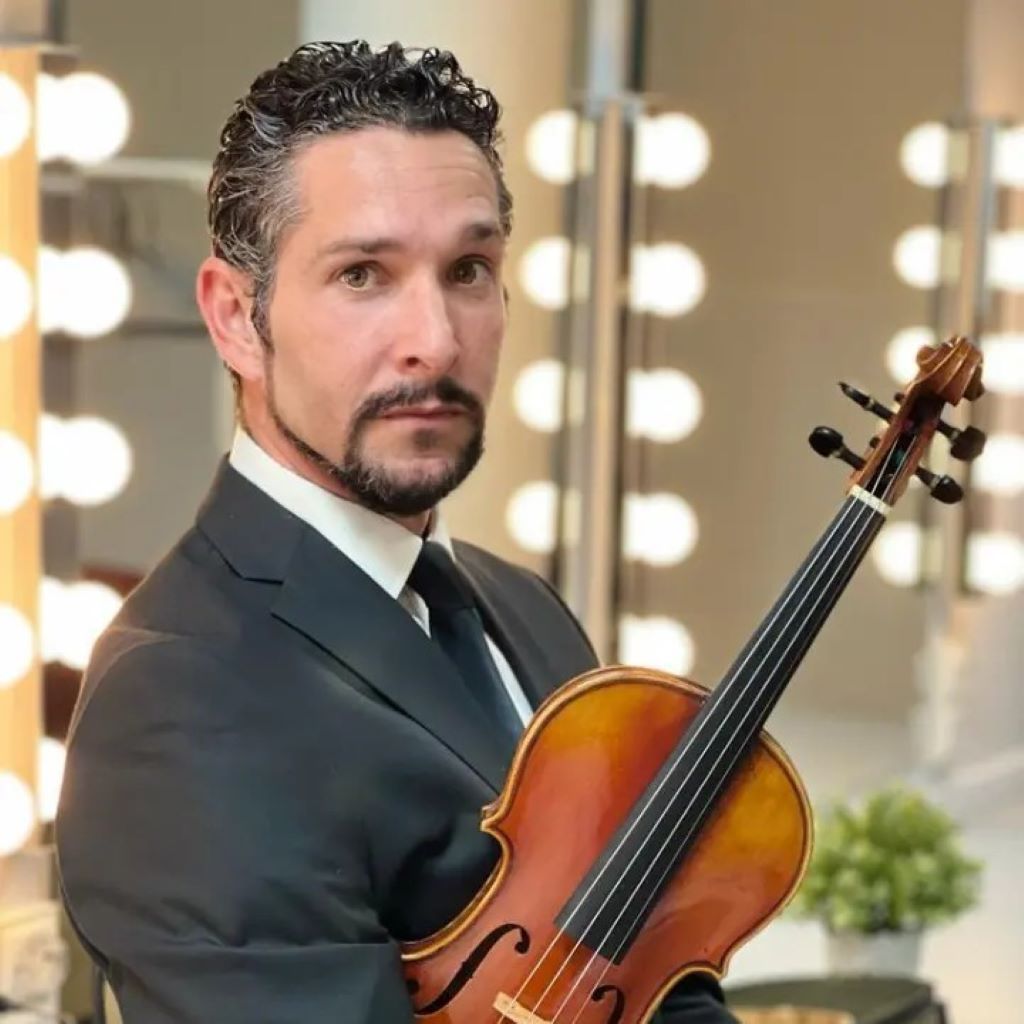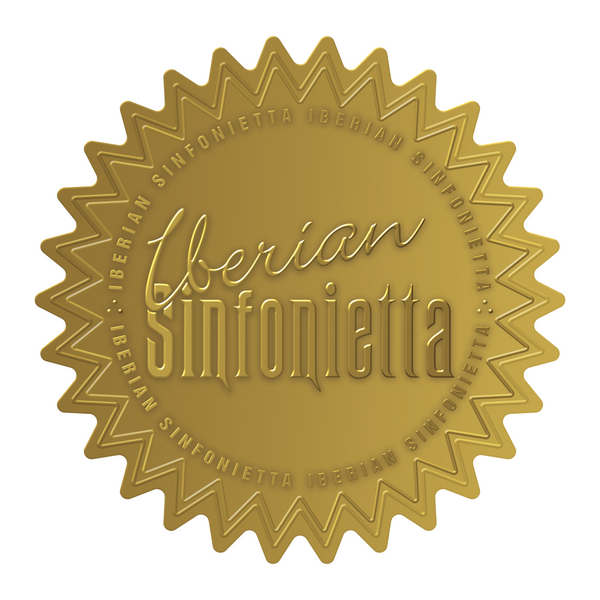
THE DEVIL'S TRENCH: AN ENIGMA IN TARTINI'S WORK
Dear audience:
The next concert in November will be a concert full of attractions, the orchestra, the auditorium, premiere works, etc. One of them will be double, since there will be a prestigious and revered solo work among violinists of all eras, as well as the public. And on November 25, the first work of the concert will be “The Devil's Trill,” a famous sonata by Tartini, one of the great violinists of the Italian Baroque school. If we add to that that the soloist will be our Enrique Tudela , the concertmaster of Iberian Sinfonietta , it makes it a very special day for the orchestra, for the concertmaster and it will be a magnificent opening of the November concert. We spoke with the Maestro, Enrique Tudela , about his work on this work. As you can see, there is always a great student and a fan of art and music behind the instrument.

You open the November concert with the devil's trill, the well-known violin sonata in G by Tartini. What feeling do you have?
It is a complex mix of sensations. It is a work that is difficult to break down on an intellectual and violin level, therefore, I consider it a great opportunity to be able to return to it in the context of the orchestra as a soloist, since it is a work that we normally perform in recitals. Emotionally, the fact of being accompanied by the Iberian Sinfonietta orchestra and my conductor Juan Paulo Gómez , with whom I have been playing for four years, is a privilege. Honestly, I'm excited and looking forward to that day.
Tell us about that work and about yourself in relation to it.
I'm going to start by saying something about myself in relation to "The Devil's Trill." This work is a pinnacle of the violin repertoire. When you begin your violin career, you grow and develop with the legends that surround its performance, especially regarding the final cadenza composed by Fritz Kreisler. All violinists, sooner or later in our education, have gone through this work, especially to develop and study technical aspects of the violin. After this period, it is a work that you end up loving and admiring, but always with a lot of respect for the difficulty it entails. In my career, now more consolidated and with a more mature direction, being able to face it with more established and extensive knowledge, has made me rediscover "The Devil's Trill" with other criteria that I find exciting. This work is most often heard performed by violin and piano. But given its importance and fascination we can find arrangements today, like the one we are going to perform in November for solo violin and string orchestra, which provides other very interesting sensations. We must find the middle ground between being faithful to the original interpretation (for solo violin and basso continuo) and innovating to contribute new musical ideas together with the chamber orchestra. In the words of David Oistrakh “Giuseppe Tartini is one of the main figures
from the Italian violin school of the 18th century. A school whose art is as significant today as it ever was.” The first printed version of the well-known "Devil's Trill Sonata" appears in the Baroque Work entitled L'Art du Violon (1978) by the violinist Jean-Baptiste Cartier. Scholars believe he received this from the French violinist Piere Baillot who studied with Pollani in Rome; who in turn was a disciple of one of Tartini's favorite students, called Pietro Nardini.
Cartier writes in his treatise that it was Tartini's students who nicknamed this sonata with the famous name "The Devil's Trill", whose origin is in Tartini's story about a dream he had. This story has come to us thanks to the French astronomer Joseph-Jérome De Lalande as part of his Memoirs on the travels he made through Italy. Lalande visited Tartini who told him about the dream he had had and which the astronomer recorded as follows:
“One night in 1713 he dreamed that he had made a pact with the devil, who promised to be at his service on all occasions; and during this vision everything was successful according to his mind.... In short, he imagined that he had given the devil his violin, to discover what kind of musician he was; when, to his great astonishment, he heard him play a solo so singularly beautiful and executed with such superior taste and precision that it surpassed anything he had ever heard or conceived in his life. So great was his surprise and so exquisite his delight at this occasion that it deprived him of the ability to breathe. He awoke violently from this sensation, and instantly seized his violin, hoping to express what he had just heard, but in vain. However, he then composed a piece which is perhaps the best of all his works (he called it "Devil's Sonata"), but it was so inferior to what his dream had produced, that he declared that he should have broken his dream.
instrument and abandon music forever, if I had been able to survive with other means.”
Today there are several theories about how Tartini composed this sonata, since we cannot access the original manuscript of it. In 1713, Tartini took refuge in a Franciscan monastery to escape certain personal difficulties. It was in this context that he had the dream. Here, Tartini was a teenage composer, so it seems extraordinary that as soon as he woke up from sleep he wrote the complete sonata. Scholars argue that Tartini may have heard the famous double trill section of the third movement from the devil, wrote it down on paper, and over a longer period of time, he was writing the sonata. In fact, Tartini experts not only classify this work as a later work in his compositional career, but also three different periods of composition can be seen in it.
It remains exciting, from my point of view, to know that this work has been in continuous evolution and revision since Tartini's death. In fact, an exceptional example of this is the arrangement made by the violinist and composer Fritz Kreisler, who added a masterful cadence to the third movement, becoming one of the most popular versions of the work of all time.
This sonata consists of three movements. The first is of moving lyricism with contained sadness. Tartini's melodic virtuosity is demonstrated by the chromatic modes. It's like a song, based on a slow Sicilian dance, that leaves you immersed in a daydream. The second movement is the perfect contrast to the introductory Larguetto. It has an energetic character between the trills, arpeggios, bariolage and the play of short bow strokes characteristic of the Padua school. For the violinist it is a “Tour de force”. The main element is the trills. The great teacher Leopold Auer called them “short trills.”
and ironic” and he said “I say brief because you have to be careful that they do not extend so that their duration interferes with the flow of the melody.” The third movement of the sonata is known as the “Sogni dell Autore” or dream.
of the author, where we will find expressive and technical contrasts between the Grave and the Allegro. It has a heroic, dramatic and virtuous tone. The Cadenza, composed by Kreisler, is one of the most complex and difficult of the violin, where the protagonist will be the double strings, the trills and the marked romantic tone.

You already have your own style. This comes from study, maturity and experience. What will be of yours in that interpretation?
What I have in this interpretation is the in-depth study of Tartini, the School of Nations and Padua, his treatise on ornamentation and the monitoring of the interpretative evolution of this work and especially of the Cadenza. I have listened for hours and hours to the different interpretations with the score in front of me and trying as always to learn from the greats and see what I can contribute, from my humble violin career. It is an opportunity to always return to this work because in itself it makes all violinists grow technically, musically and humanly.
What does it mean to be a soloist and then join the orchestra again? Is this transition complex?
You have to make a mental change, including concentration, the way you play.
Being a soloist requires a responsibility comparable to any other moment as a violinist, since for me, the focus is always on the audience that comes to listen to us. From my point of view, what changes is the exposure to the listener, which as a soloist is more so. I think it is very enriching to have the opportunity to be a soloist and to play in the orchestra.

How do you see Iberian Sinfonietta?
I see it with eyes full of motivation and affection, it has been 4 years belonging to
this orchestra and being conducted by Juan Paulo Gómez . When you realize one day that something is part of your routine, that something is already important to you.
As I have highlighted on other occasions, I admire the project that the director carries out with determination, systematically offering culture to the Malaga community, a commendable act in these times.
It is an orchestra that continues to evolve and always taking another step in the repertoire. In addition to giving the opportunity, so rare in society, for the members of the orchestra to perform concerts as soloists, as is now the case in my case and on other occasions for my colleagues. Also, Iberian Sinfonietta is a forum for meetings with musicians and composers outside the orchestra. I wish it were an example to follow in other contexts.
Something that remains in our minds
Thank you dear Juan Paulo for giving me the opportunity to study and interpret "El trino del diablo", which is nothing other than giving me the opportunity to grow as a human being and be a better person, thanks to the knowledge, discipline and study that it gives this work. It will be a nice day to feel accompanied by my colleagues and I hope with all my heart that the public enjoys and is moved that day.
I would like my director to allow me to close this interview with the words
that Tartini writes in a letter that accompanies some sonatas that he sends to the king
Prussian Frederick the Great. These words perfectly describe the opportunity on a human level that it is for a violinist to be able to study Tartini, and it goes like this:
“…it is impossible, without exception, for another man, whoever he may be, to resemble in any aspect of my personality and my expression, just as it is impossible for one man to perfectly resemble another. To reveal something of my character and my intention I must say that, as far as possible, I feel more at ease with nature than with art, since I have no other art than the imitation of nature. In fact, in my old age, since I can no longer attach myself to the particular nature of my species, I attach myself, in the
as far as possible, to the universal nature of genius, which I find sufficiently pleasant and satisfactory.” (Tartini and the Tongue of Saint Anthony, p. 445).
We say goodbye to the Maestro, wishing him all the luck in the world in his interpretation of the sonata “The Devil's Trill”, with which he will begin the evening on November 25.
Jorge Rodríguez Morata
Pedagogical content coordinator.
